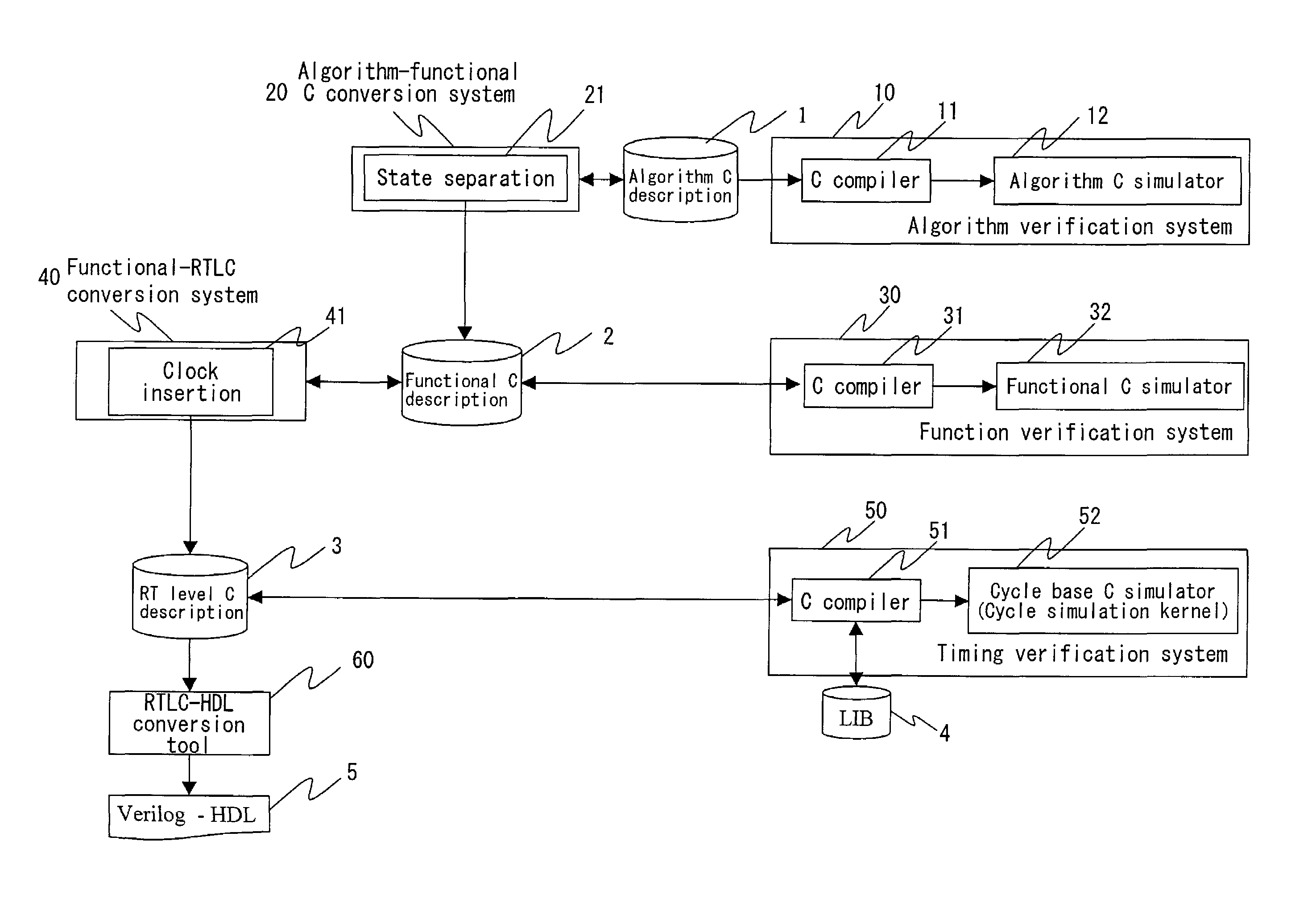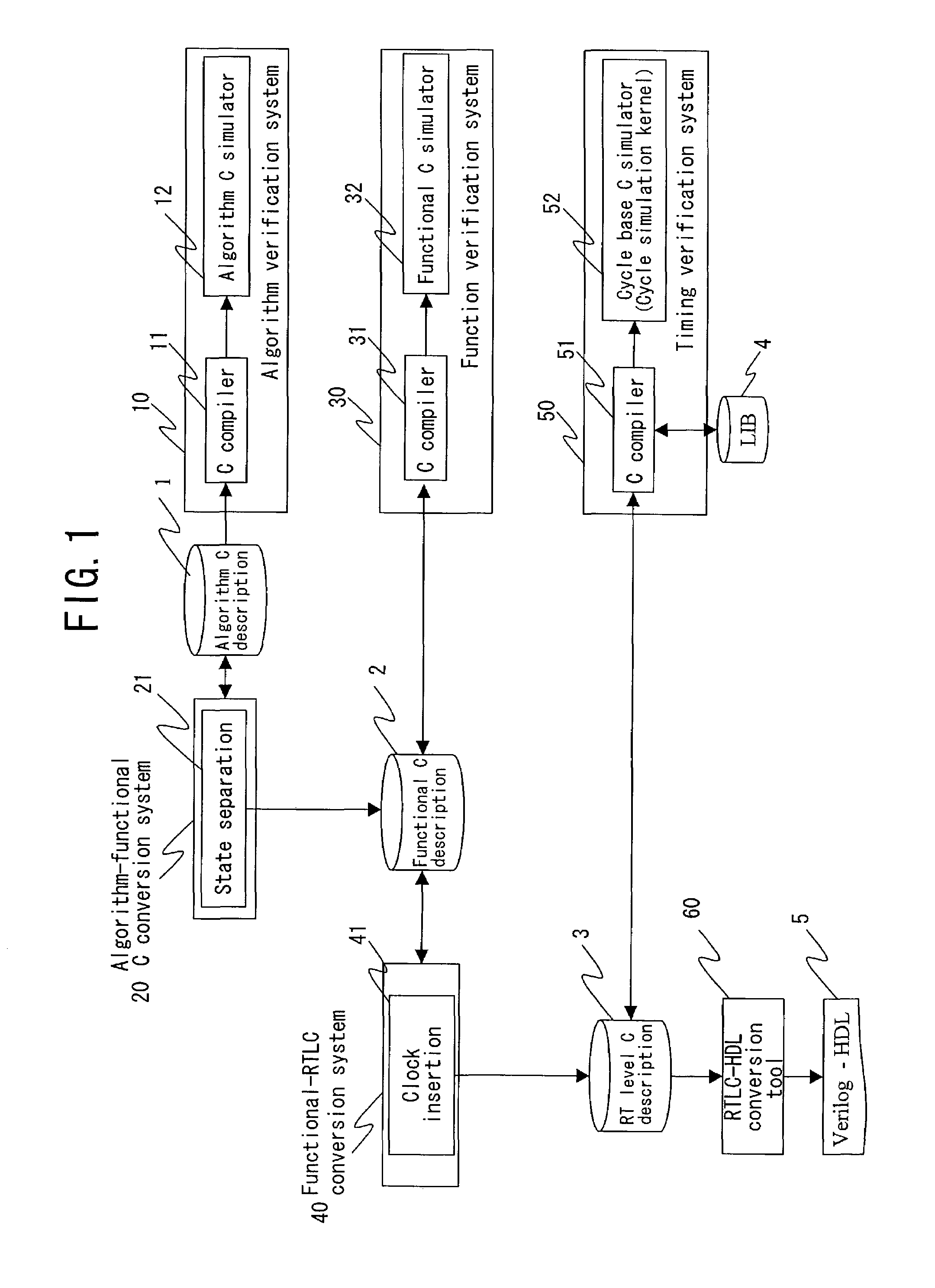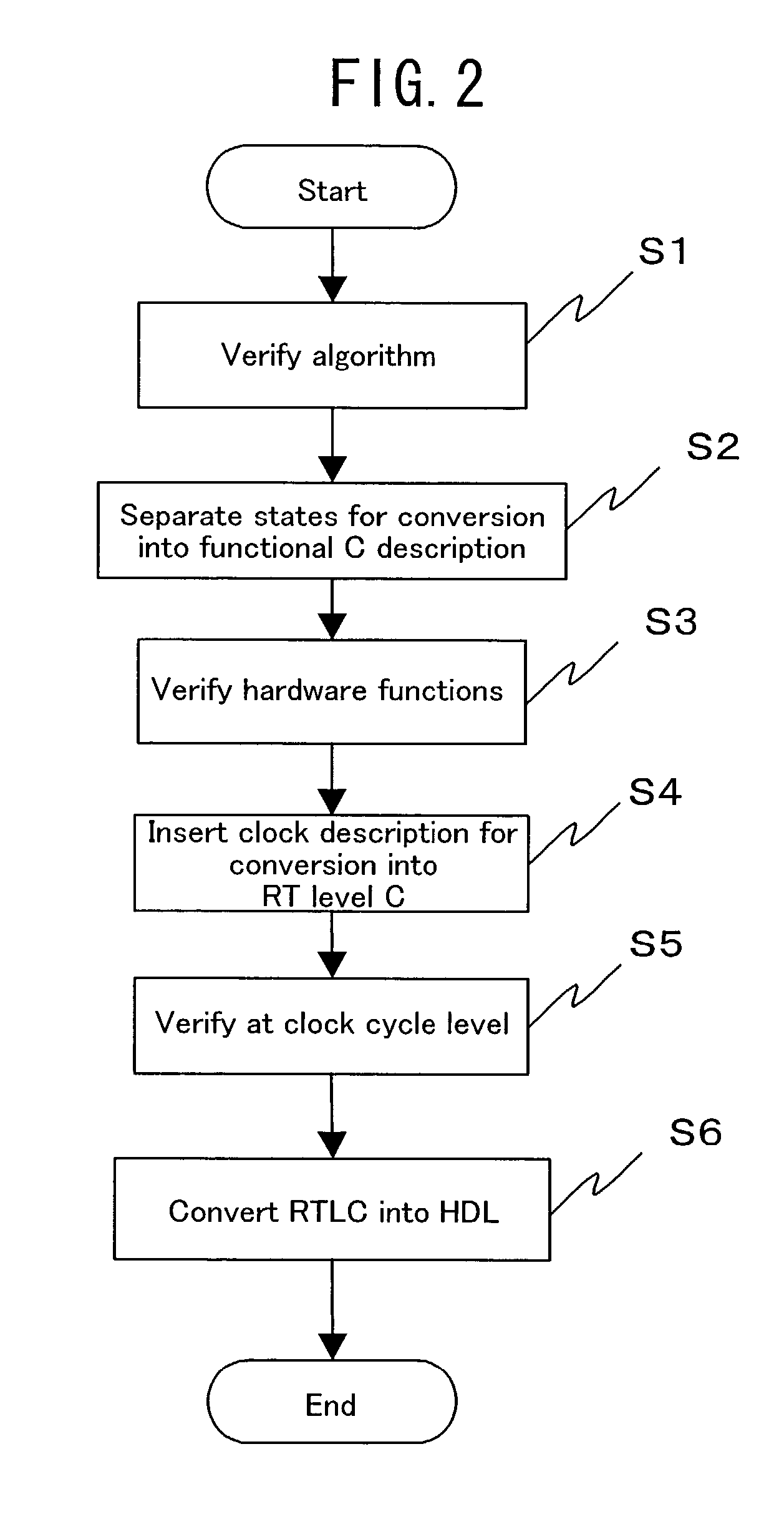Method of designing a logic circuit utilizing an algorithm based in C language
a logic circuit and algorithm technology, applied in the field of logic circuit design, can solve the problems of difficult to obtain the circuit intended by the designer, difficult to read the design circuit, and large scale of the circuit designed with such tools, and achieve the effect of short period of time and good quality
- Summary
- Abstract
- Description
- Claims
- Application Information
AI Technical Summary
Benefits of technology
Problems solved by technology
Method used
Image
Examples
embodiment 1
[0048]FIG. 1 illustrates a configuration of a logic circuit design system of Embodiment 1 of the present invention, which is a hardware top-down design system from C language description. Referring to FIG. 1, the reference numeral 1 denotes an algorithm C description, which is a description of an algorithm of computation or control of a logic circuit as a design object system written in a C language, 2 denotes a functional C description describing control of hardware, 3 denotes a RT level C description, which is a C language description at a register transfer (RT) level. The algorithm C description 1 is written in an existing C language such as ANSI-C and C++.
[0049]An algorithm verification system 10 generates an algorithm C simulator 12 by compiling the algorithm C description 1 with a C compiler 11. An algorithm-functional C conversion system 20, which includes a state separation means 21, converts the algorithm C description 1 into the functional C description 2. A function verif...
embodiment 2
[0083]FIG. 7 illustrates a configuration of a logic circuit design system of Embodiment 2 of the present invention, which is a hardware top-down design system from C language description. In FIG. 7, the same components as those in FIG. 1 are denoted by the same reference numerals. In FIG. 7, an algorithm-functional C conversion system 20A includes a module separation means 22, which rewrites the algorithm C description 1 for each module taking notice of hardware functions, to perform module separation. A functional-RTLC conversion system 40A includes a control / data path separation means 42, which separates a state transition description representing “control” and a computation description representing “data path” from the function C description 2.
[0084]FIG. 8 is a flowchart of the logic circuit design method of this embodiment. In FIG. 8, the same process steps as those in FIG. 2 are denoted by the same reference numerals. In FIG. 8, step S7 is a module separation determination step...
embodiment 3
[0102]FIG. 13 illustrates a configuration of a logic circuit design system of Embodiment 3 of the present invention, which is a hardware top-down design system from C language description. In FIG. 13, the same components as those in FIG. 7 are denoted by the same reference numerals. In FIG. 13, a functional-SystemC conversion system 40B, a SystemC verification system 50A and a SystemC synthesis tool 70 are provided in place of the functional-RTLC conversion system 40A, the timing verification system 50 and the conversion tool 60 in FIG. 7. The functional-SystemC conversion system 40B includes the control / data path separation means 42 and a sensitive description insertion means 43 for sensitive designation, and converts the functional C description 2 into a SystemC description 6. The SystemC verification system 50A compiles the SystemC description 6 with a C compiler 53 using a SystemC library 7, to generate a SystemC simulator 54. The SystemC synthesis tool 70, which is made of a Sy...
PUM
 Login to View More
Login to View More Abstract
Description
Claims
Application Information
 Login to View More
Login to View More - R&D
- Intellectual Property
- Life Sciences
- Materials
- Tech Scout
- Unparalleled Data Quality
- Higher Quality Content
- 60% Fewer Hallucinations
Browse by: Latest US Patents, China's latest patents, Technical Efficacy Thesaurus, Application Domain, Technology Topic, Popular Technical Reports.
© 2025 PatSnap. All rights reserved.Legal|Privacy policy|Modern Slavery Act Transparency Statement|Sitemap|About US| Contact US: help@patsnap.com



